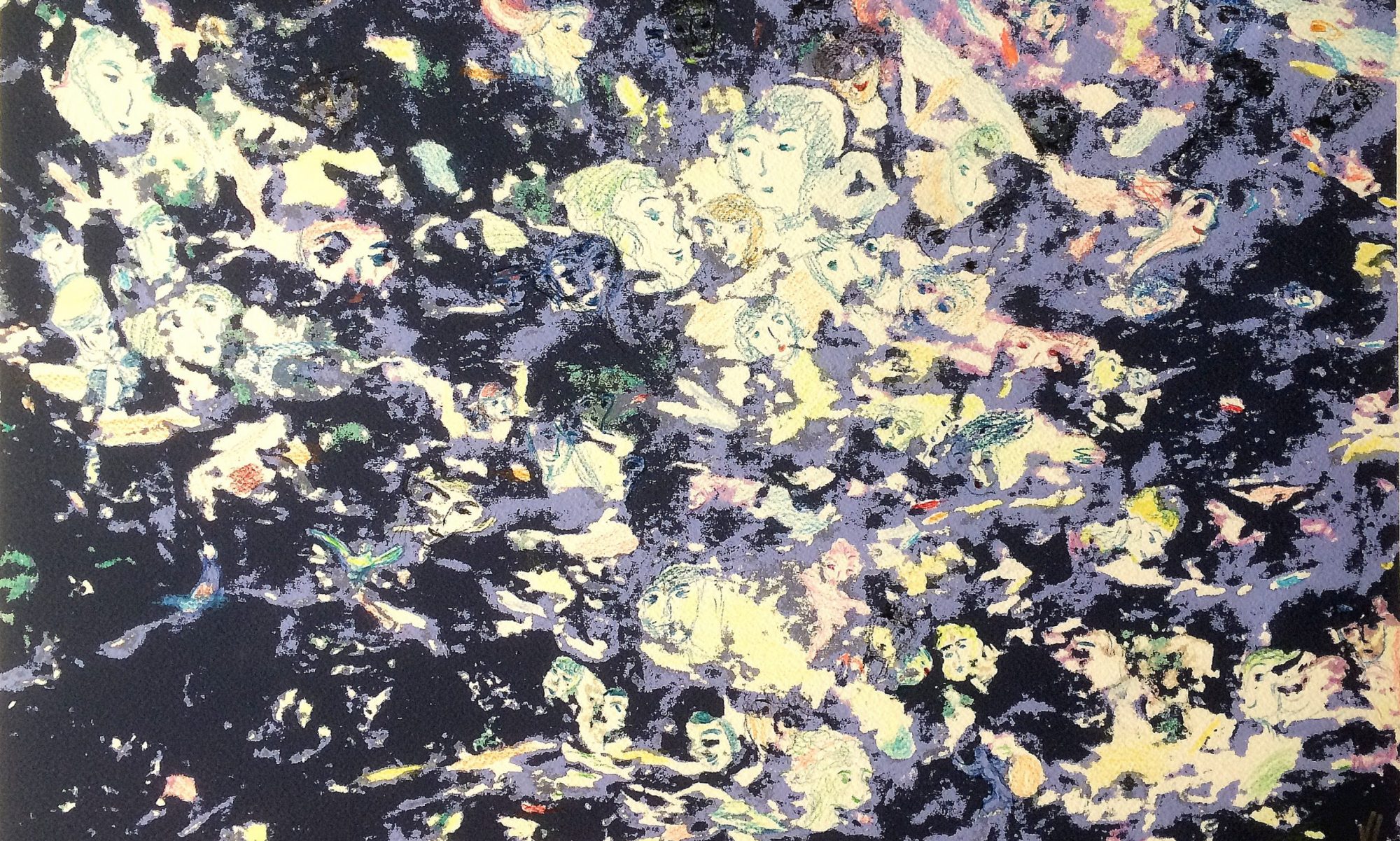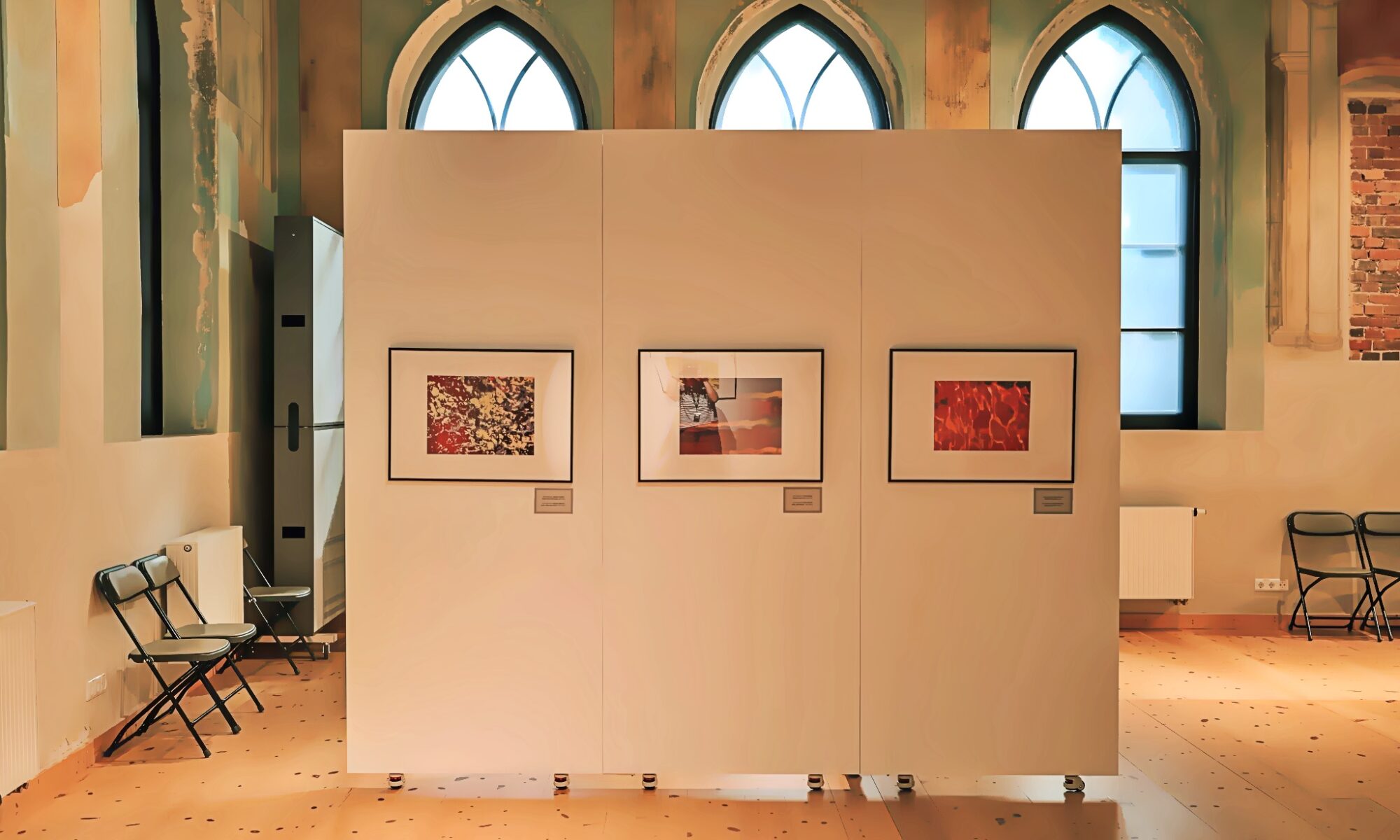STORIES & THOUGHTS BEHIND ARTWORKS at the NEW EXHIBITION IN LITHUANIA
Part 2. Echoes from the Past and Artistic Visualisation of Memory in artworks of Inna Rogatchi
By Inna Rogatchi ©
First published in The Times of Israel, September 2025.
At Inna and Michael Rogatchi special visiting dual Shtetl Song exhibition at the restored historical synagogue in Alytus, Lithuania, in September – October 2025, Inna’s works have been presented by her ten-strong Shtetl Memories , also known as Yiddish Songs series. It has been analysed by one of the leading European cultural voices of today Dr Michael de Saint-Cheron in his Hearing the Songs of Our Souls essay.
The series is part of the 25-work special art collection of the artists which The Rogatchi Foundation has donated in 2024 to the Public Library and Cultural Centre in Jonava, Lithuania. Consequently, the collection has become the subject of following exhibitions throughout the country, as the way of the commemorative educational process.
The highlights for Michael Rogatchi’s part of the exhibition and the connections of some of his works from it to the outstanding international Jewish personalities, such as Elie Wiesel, Leonard Cohen, Marian Turski and Lev Dodin, has been covered in the part 1 of this essay.
There also were mentioned the special features of the building, the restored historical synagogue of the early XX century, in which the exhibition is having the place.
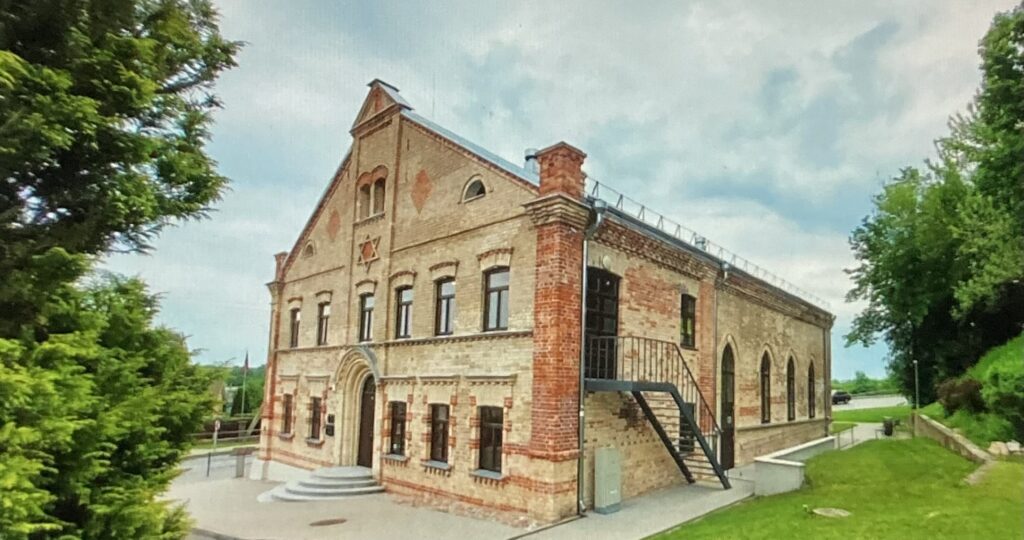
What has positively impacted the exhibiting the special art series of the works of reconstructed memory is a very intense cultural program at the Alytus Audiovisual Arts Centre during the whole period of the exhibition, filled with concerts and special events, many of which have been dedicated to the Jewish heritage, history and traditions. Successfully created the cumulative effect of synthesised arts, music, and history, and public interest and involvement has doubled an effect of all artists and musicians’s efforts and also has produced something new, a synthetic multi-sided, multi-disciplined dialogue with public that speaks on restored memory, and actually creates it. It is a very engaging and rewarding process for everyone who has been lucky to participate in it.
The timing for this exhibition has also been chosen with lots of fitting reasons: it started at the beginning of the two-month celebrations this year of the European Days of Jewish Culture ( scheduled from September 7th through November 4th), and included both the period of the High Holidays and the dates in the second part of September which are annual commemorative days for the Jewish victims of the Shoah in Lithuania, where the crimes had been committed in devastating numbers.
Observing the Inna Rogatchi Shtetl Memories collection on display in Alytus Audiovisual Arts Centre, there are some stories behind the artworks, as told by the artist.
Homecoming in Detail
All eleven works of Inna represented at the Shtetl Songs collection have one feature in common: human faces, details of life gone decades ago, some very concrete images of dreams. All these works are part of Inna’s ongoing project known as Songs of Our Souls which is characterised by the presence of all those faces and details.
It all started back in 2017 with Inna’s first work in her ongoing project, Song of Our Souls I. This work in specific is a homage to French Jewry which has been betrayed cruelly by their own government prior and during the Second World War. Inna’s own great-aunt, famous violinist at the time, Alma Rose, the daughter of outstanding musicians, long-term concertmaster of the Vienna Symphony Orchestra maestro Arnold Rose and his wife, Gustav Mahler’s sister Justine, was deported to her death in Auschwitz in 1943 from infamous Drancy, the French internment camp, among almost 70 000 of the other Jewish victims of Nazism, despite desperate efforts by the family and friends to appeal to their famous French musical colleagues to try to save the niece of Gustav Mahler.
The work that has started the ongoing and large enough by now series, and actually, a special direction in Inna’s art, was dedicated to all of them, who loved France with all their heart, and many of whom brought the fame and brilliance to the country that treated its Jewish population so coldly and cruelly.
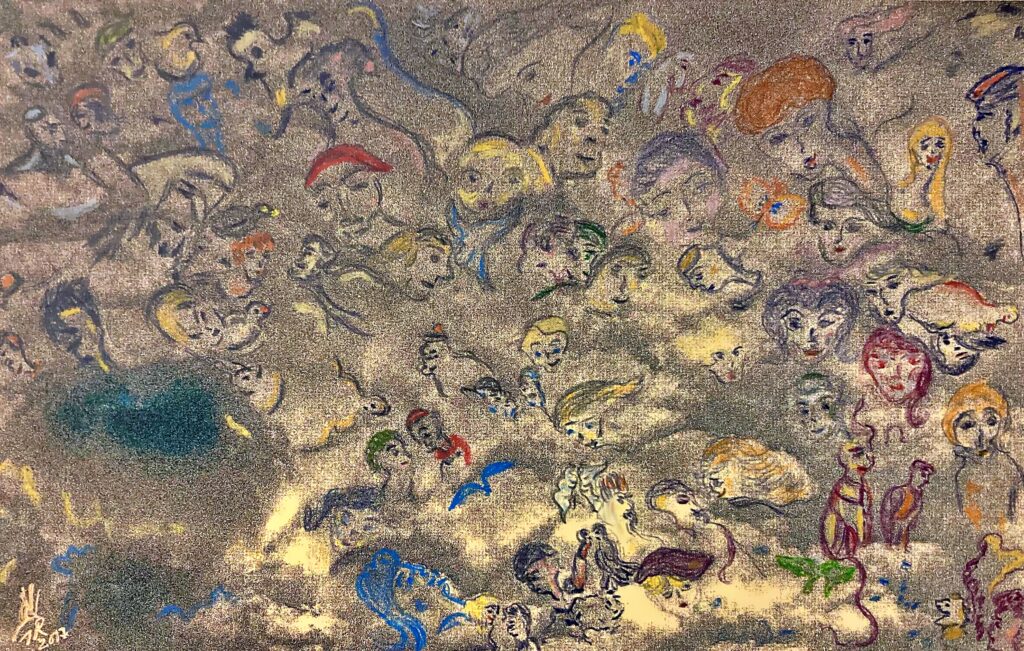
This work has participated in the Inna and Michael’s dual commemorative Psalms & Songs of Memory exhibition in Helsinki on the first anniversary of the terrible events of October 7th, in October 2024.
The other work from the same series, seen at the exhibition, Memory Cloud II ( 2018 – 2021) is a continuation of the artist’s thoughts and ideas of artistic visualisation of the people, very concrete people who has gone physically, but who can stay in our memory, if we will apply an effort to remember them. This work refers not necessarily to Jewish people, but to all of us in general. It imagines the air around us as if consisting of images of the people who are not among us any longer, but whose souls are still here – if one strives to remember about it.
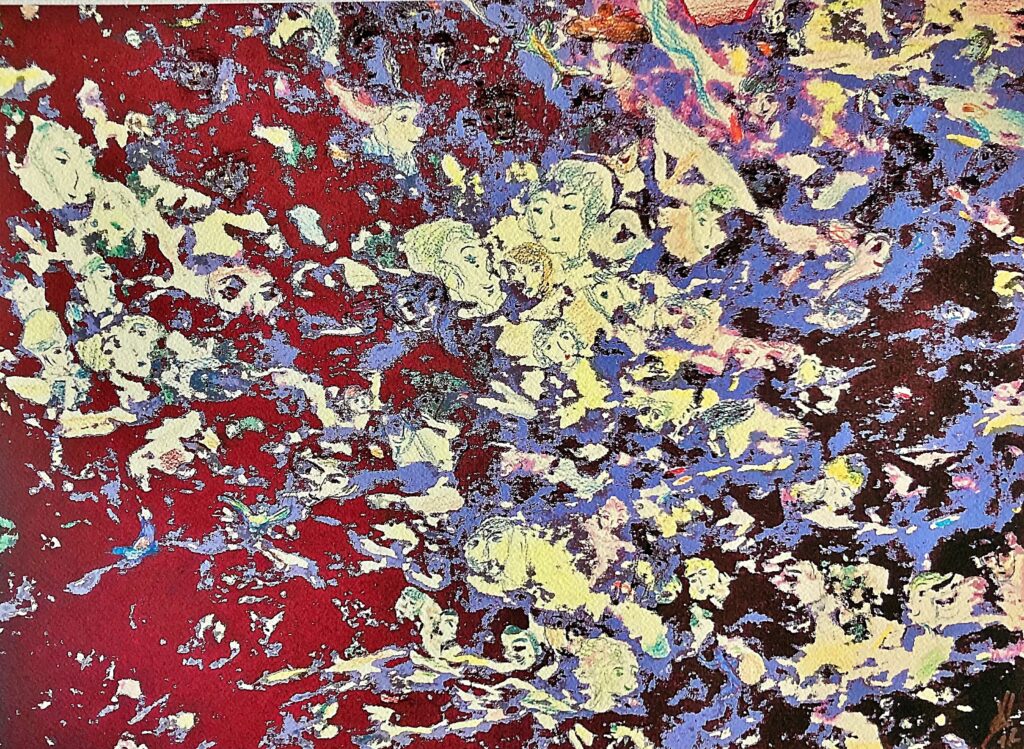
The original of this work belongs to a notable private collection in London. For the Shtetl Songs collection, Inna has made a special version of the work, with changed background colours, making it more contrast and referring by this defined colours of the background to four main elements, in their anti-thesis pairs, such as air versus earth, and fire versus water, as well as four seasons, and four astronomic domains of energy and cosmic masses.
The Cry of Heaven ( 2019) work is also dedicated to the Holocaust and the people who have become the victims of it , an absolutely innocent victims of horrific cruelty of extermination, including the members of Inna and Michael Rogatchi families in Ukraine, Belorussia, Lithuania, Poland, Austria, and France. The real number of the victims of the Shoah is much higher than an accepted figure of six million. Accounting the number of the victims which has been not accounted by the devilish Nazi book-keeping of the death-camps, adding those who were murdered by what is known as ‘Holocaust of bullets’ in innumerous forests and ravines all over the Baltics, Eastern Europe and partially Central Europe, the known figure should be enlarged by 1,5 – 2 million, according to several serious independently conducted historical researches.
The original of this work participated in two notable international exhibitions, one in London commemorating the International Holocaust Remembrance events in 2020, and another in Helsinki in 2024 commemorating October 7th.
For the collection donated to Lithuania, Inna produced a special version of the work, in which the contrast of the field of sorrow has been made more graphic, to underline the message that as we all realised after the October 7th, the eighty years after the Holocaust did not teach people practically nothing with regard to humanity, as sadly and alarmingly as it is.
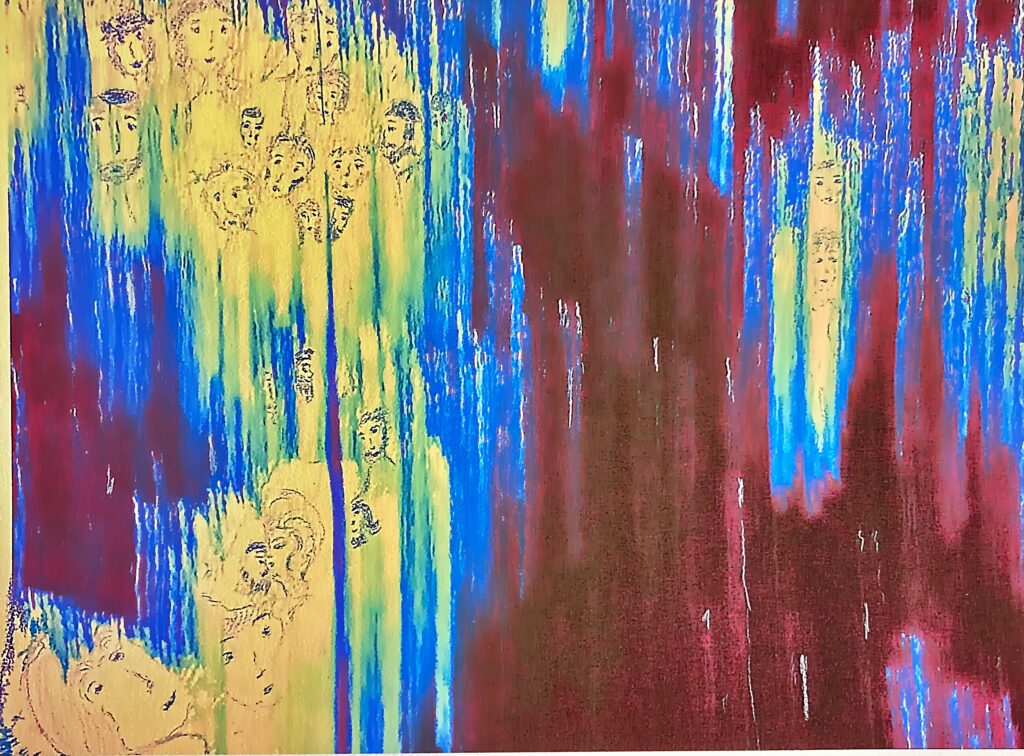
Prayers and Dreams Through an Artist Eye
Several works in Inna’s collection shown in Lithuania are reflecting on prayers and dreams.
A prayer as a process has been always a magnet for artists, as this is an unique human experience, both the most personal, most fervent in its hopefulness and at the same time is most unpredictable in its outcome. Analysing this process via her own artistic reflection in her Psalm work ( 2018), Inna was trying to imagine the condition of a human soul during that very special moment in our lives. The moment of one’s ultimate sincerity.
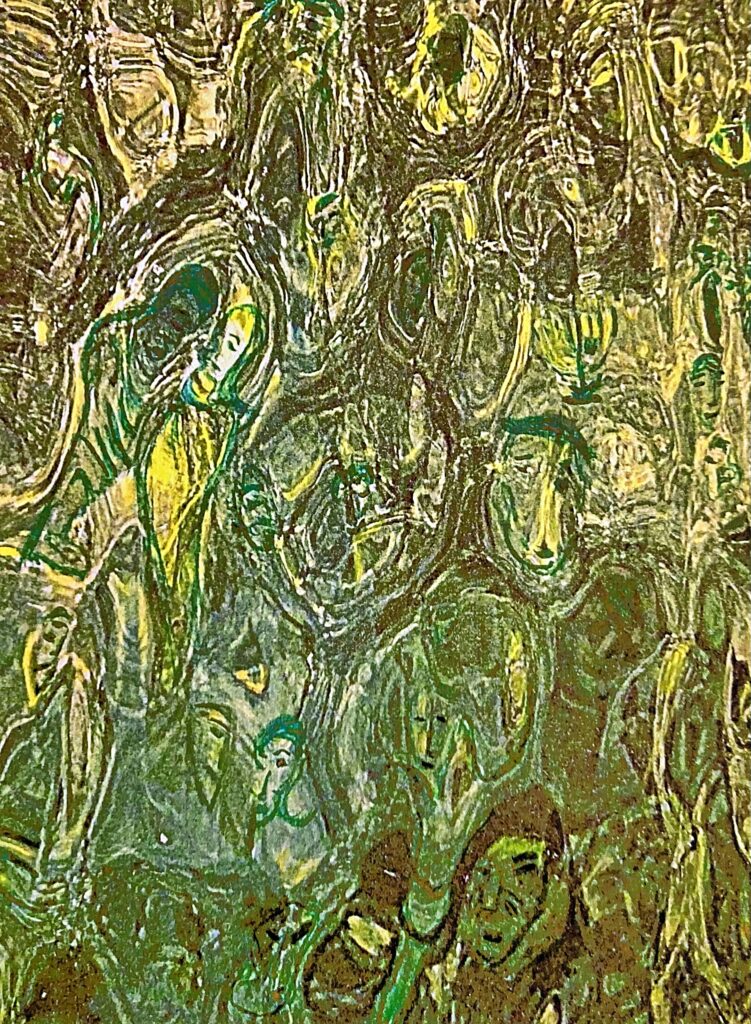
This work also had quite unexpected art history context recently. When Inna visited Amsterdam in spring 2025, to work at the unique exhibition from The Leiden Collection there, she did show her and Michael’s Shtetl Songs collection to some of their art historian Dutch colleagues. One of them did point out the remarkable resemblance of Inna’s Psalm 18 work with one of the latest works of Van Gogh, his Ears of Wheat.
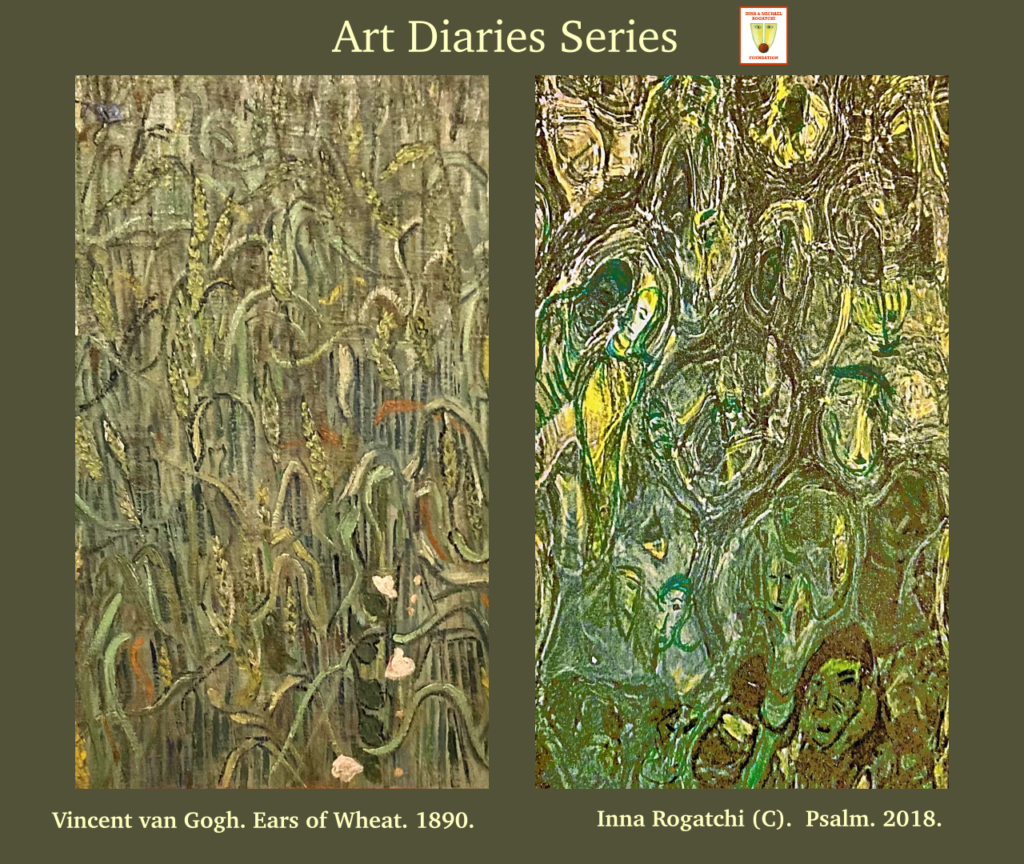
“One can really rarely see so much resemblance between two works of such different periods, technique, subject-matter and topic. It means only one thing: the point of view. The artists’ point of view, and the way in which their metaphor, on these absolutely different subjects, has been materialised”, – was a comment by one of the leading Dutch art historians who have noticed this unexpected surprise.
The explanation to that can be in the fact that Inna works very closely on van Gogh, his life, his works and his world and vision for many years, starting from early 2000s, and runs her own VINCENT cultural, artistic and educational project.
Mirages of Memory
Dreams are probably the most widely spread dimension of artists’ work, not only because of the flights of imagination, and that special unique quality of freedom that it provides, but also because it so very often opens new horizons about existence of which we have had no idea before getting into the work.
In the case of Inna’s Shtetl Mirage ( 2024), the work, the vision of a shtetl has been created from nothing material, no object was present at the work’s background in the beginning. But then, it all gradually appeared: the houses, the landscape, the signs of life, some birds, some faces. Artistically, it was a process of materialisation of genetic subconscious memory. And it has become a very real portrait of remembrance. Because of its warmth, and maybe because of its projected feelings of mirage which sometimes feels more real than life behind a window, this work is truly special for the artist.

There is also a telling and rewarding episode regarding Inna’s diptych Shtetl Walks & Memories ( 2024). In these works, Inna was drawing an imaginary shtetl, with more and more details coming to it, as if life, or memory of it, has been re-created, almost by itself, in a real-time.
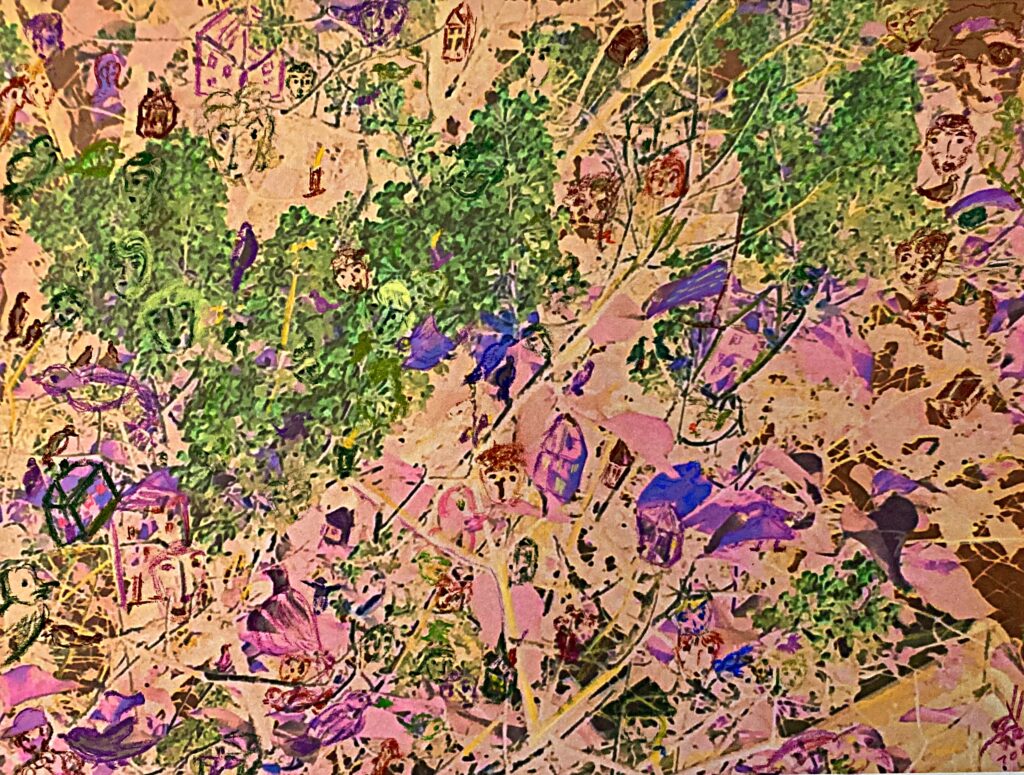
Recently, while working on another project related to shtetls and its culture, Inna found the description of one of so many shtetls that used to thrive in Lithuania, this one was about the shtetl in Valkininkai, not far away from Vilnius. The historical description was written at the time when the Alytus brick synagogue where the Audiovisual Arts Centre is situated today, was built, in the early 20th century.

To her full astonishment, the artist was reading the description of real shtetl from early 1910s that practically described her artworks as she drew it in 2024: the synagogue, the cheder, the bridge, two rivers running in parallel, the houses close to them, all wooden, except three brick houses, a bakery, two water-mills, grocery shops, forest nearby, market place, and so on.
It was an incredible re-discovery from the artist’s point of view. Inna realised that in her drawing of an imaginary shtetl, she actually drew something very close to a real place, with its famous old synagogue that had unique Aron Kodesh ( Torah Ark), extremely elaborated and artistic, and also the place where , according to a written legend, local rabbi Shmuel, who also was rabbi of Vilna at the time, used to walk with legendary Vilna Gaon in the middle, or towards the second part of the 18th century.
According to that written source, Vilna Gaon very much liked to walk there, due to the place’s scenery and its two rivers – just like in Inna’s drawing. Vilna Gaon loved to stay on the bridge and look from it trying to recognise fishes living in those rivers. He was involved in all that deeply.
When things like that happen to an artist, it is a special gift, for which one is very grateful.
Artworks’ New Lives
One of telling samples of a very interesting, always unique and individual process of some artworks’ continuation of life and their development is one of the special works from this collection, Litvak Story I ( 2023). The original work with emphasis on the Litvak culture and its symbols had been created by the artist in 2023, for one of her projects in Lithuania. The work’s second version, Litvak Story II ( 2024) belongs to a well-known private collection in New York of a very notable expert on Yiddish culture and literature.
And now, the artist is working on the third version of this expressive and important for her work, Litvak Story III ( 2025), which is part of The Rogatchi Foundation special Living Memory Appreciation Award which will be awarded later this year to the renown Finnish architect professor Rainer Mahlmäki and his great team at the Lahdelma & Mahlamäki Architects Finland for their fantastic work in creating recently accomplished, after almost decade in making, new museum of Jewish history, The Lost Shtetl in Lithuania.
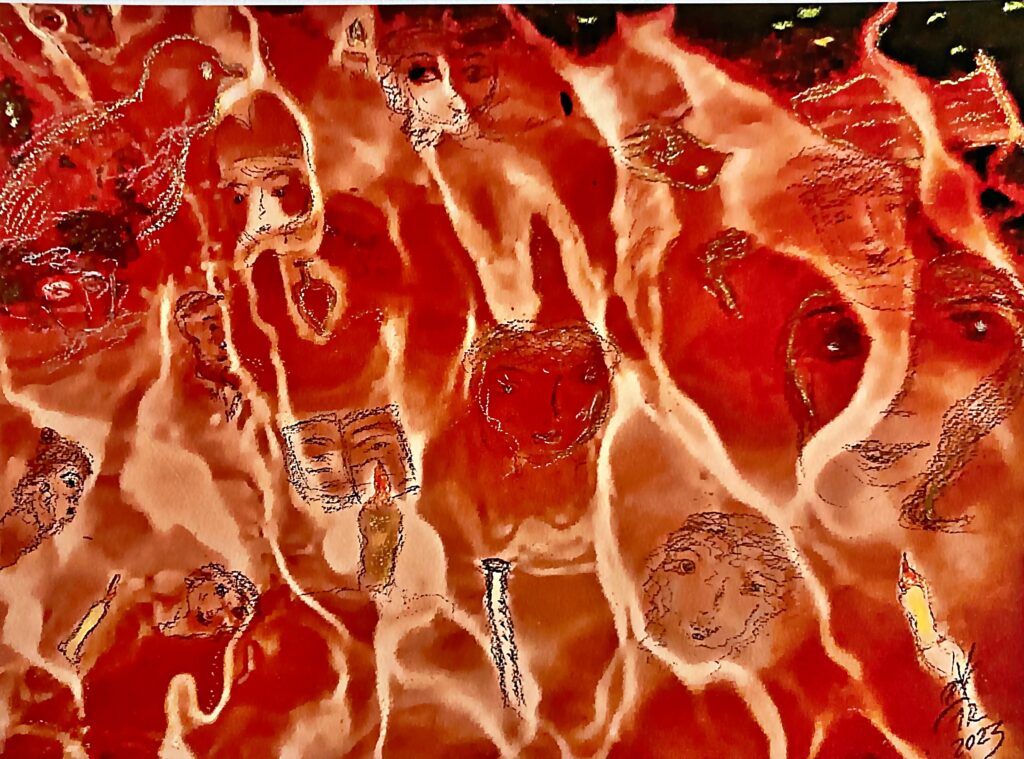
This is how art helps us to reconstruct our memory, to create an artistic visual dialogue with our history, and to keep its images and symbols close to our hearts. To warm it up at the times of rainy darkness.
SHTETL STORIES. Michael and Inna Rogatchi Special Art Collection at the Audiovisual Arts Centre, Alynas, Lithuania. September 9 – October 4, 2025.
Part 1 of the essay about the stories and great inspirations behind Michael Rogatchi works from his Shtetl Songs collection can be read here.
September 2025
